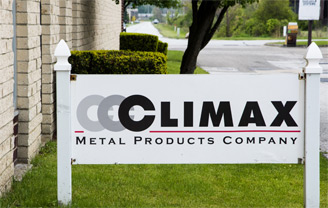What is backlash?
Backlash is the slop or play in a mechanism caused by gaps between the parts. Generally, this is defined as the amount of clearance in the device after motion is applied and before the mechanism activates. An example would be turning a steering wheel in a car, and feeling the loose motion before the steering engages. Backlash is usually not desired in most industrial applications, although occasionally some amount of backlash is necessary.
What is a shaft tolerance?
Shaft tolerance is the amount of allowable difference between the size of collar or coupling and the size of the shaft that will still allow the component to function. Ideally, a ¾” collar will be used on a ¾” inch nominal shaft. The closer to nominal the better – if the difference is too great, the collar may not even clamp. A difference of even ½ millimeter is quite high. Climax bore tolerances can be found in our catalog and online.
What is torque capacity?
This is a very commonly asked question, and it depends on each individual application. For a collar, the key figure is the axial load of the collar, and for a coupling it is how much torque it can transmit. Consult our technical data sheet for typical maximum values for axial load and torque data. Please note the data presented are based on limited test results and are not a guarantee of minimum or maximum values under all conditions. These values are only a guide, and must be evaluated by customers based on individual application.
What is the operating temperature range for shaft collars & rigid couplings?
Climax shaft collars and couplings can be used in applications over a wide range of operating temperatures. The table below lists these ambient operating temperature ranges for our shaft collars and rigid couplings based on material.
| MATERIAL | AMBIENT OPERATING MIN (°F) | AMBIENT OPERATING MAX (°F) |
| STEEL – High Strength, Low Carbon Steel | -40 | 350 |
| STAINLESS STEEL – Type 303 / Type 316 | -40 | 350 |
| ALUMINUM – Type 6061 – T651 or equivalent | -40 | 225 |
| ACETAL – Delrin | -10 | 185 |
Note that the numbers listed in the table are ambient temperatures and are not applicable when the part is directly exposed to a heat source. These values are ‘typical’ operating temperature ranges and are not a guarantee under all conditions. They are meant to be a guide and must be evaluated by the customer based on individual application. For applications where the shaft collar and/or rigid coupling would be subjected to temperatures outside the ambient operating temperature range presented above, please contact a Climax applications engineer.
What Type of Screws does Climax Use in its Products?
Climax steel and aluminum collars and couplings are supplied with steel screws. Stainless steel collars and couplings as well as all non-metallic collars are supplied with stainless steel screws. (more…)
What is the Significance of a Key?

At its most basic explanation, the key fits into the keyseat and the keyway and is used to transfer torque from the shaft to the mounted component. Climax offers shaft collars and rigid couplings in both set screw and clamping designs that will fit a variety shaft sizes. Cataloged collars and couplings are provided with parallel keyways.










